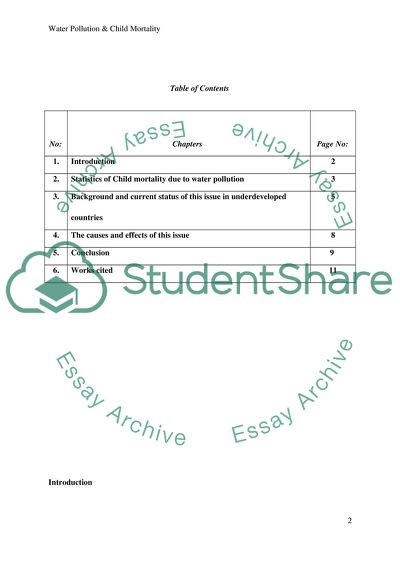Cite this document
(The Effects of Water Pollution on Child Mortality Term Paper, n.d.)
The Effects of Water Pollution on Child Mortality Term Paper. https://studentshare.org/environmental-studies/1867376-global-issues-the-effects-of-water-pollution-on-child-mortality-rates-in-underdeveloped-countries
The Effects of Water Pollution on Child Mortality Term Paper. https://studentshare.org/environmental-studies/1867376-global-issues-the-effects-of-water-pollution-on-child-mortality-rates-in-underdeveloped-countries
(The Effects of Water Pollution on Child Mortality Term Paper)
The Effects of Water Pollution on Child Mortality Term Paper. https://studentshare.org/environmental-studies/1867376-global-issues-the-effects-of-water-pollution-on-child-mortality-rates-in-underdeveloped-countries.
The Effects of Water Pollution on Child Mortality Term Paper. https://studentshare.org/environmental-studies/1867376-global-issues-the-effects-of-water-pollution-on-child-mortality-rates-in-underdeveloped-countries.
“The Effects of Water Pollution on Child Mortality Term Paper”. https://studentshare.org/environmental-studies/1867376-global-issues-the-effects-of-water-pollution-on-child-mortality-rates-in-underdeveloped-countries.


